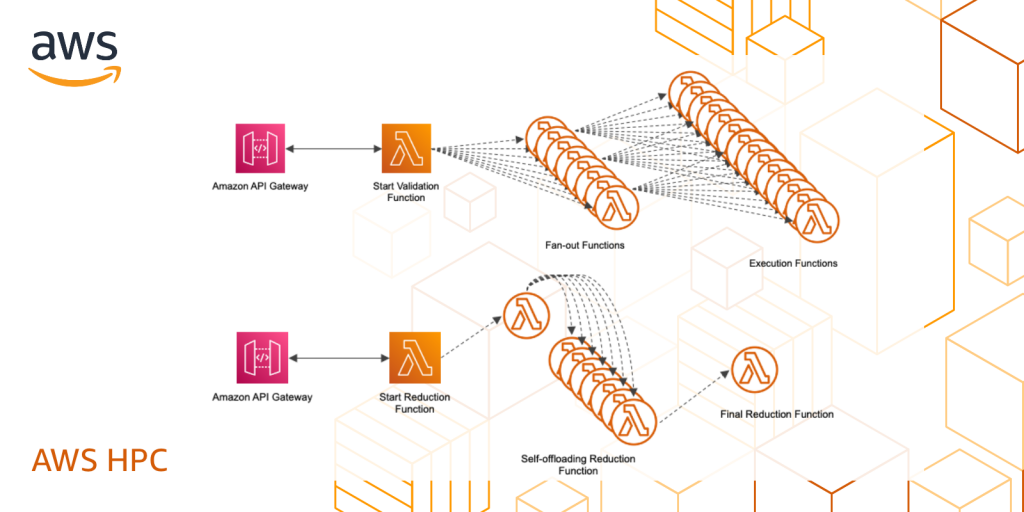AWS HPC Blog
Category: *Post Types
AWS Batch Dos and Don’ts: Best Practices in a Nutshell
AWS Batch is a service that enables scientists and engineers to run computational workloads at virtually any scale without requiring them to manage a complex architecture. In this blog post, we share a set of best practices and practical guidance devised from our experience working with customers in running and optimizing their computational workloads. The readers will learn how to optimize their costs with Amazon EC2 Spot on AWS Batch, how to troubleshoot their architecture should an issue arise and how to tune their architecture and containers layout to run at scale.
Running the Harmonie numerical weather prediction model on AWS
The Danish Meteorological Institute (DMI) is responsible for running atmospheric, climate and ocean models covering the kingdom of Denmark. We worked together with the DMI to port and run a full numerical weather prediction (NWP) cycling dataflow with the Harmonie Numerical Weather Prediction (NWP) model to AWS. You can find a report of the porting and operational experience in the ACCORD community newsletter. In this blog post, we expand on that report to present the initial timing results from running the forecast component of Harmonie model on AWS. We also present these as-is timing results together with as-is timings attained on the supercomputing systems based on Cray XC40 and Intel Xeon based Cray XC50.
Cost-optimization on Spot Instances using checkpoint for Ansys LS-DYNA
A major portion of the costs incurred for running Finite Element Analyses (FEA) workloads on AWS comes from the usage of Amazon EC2 instances. Amazon EC2 Spot Instances offer a cost-effective architectural choice, allowing you to take advantage of unused EC2 capacity for up to a 90% discount compared to On-Demand Instance prices. In this post, we describe how you 0can run fault-tolerant FEA workloads on Spot Instances using Ansys LS-DYNA’s checkpointing and auto-restart utility.
Quantum Chemistry Calculation with FHI-aims code on AWS
This article was contributed by Dr. Fabio Baruffa, Sr. HPC and QC Solutions Architect at AWS, and Dr. Jesús Pérez Ríos, Group Leader at the Fritz Haber Institute, Max-Planck Society. Introduction Quantum chemistry – the study of the inherently quantum interactions between atoms forming part of molecules – is a cornerstone of modern chemistry. […]
Call for participation: PRACE Winter School
The Inter University Computing Centre (IUCC) in Israel and AWS have joined forces to train Researchers and Research Software Engineers (RSEs) in the use of AWS for High Performance Computing (HPC) at the PRACE Winter School, 7-9 December 2021, and we’re calling for interested groups to sign up and join us.
New: Introducing AWS ParallelCluster 3
Running HPC workloads, like computational fluid dynamics (CFD), molecular dynamics, or weather forecasting typically involves a lot of moving parts. You need a hundreds or thousands of compute cores, a job scheduler for keeping them fed, a shared file system that’s tuned for throughput or IOPS (or both), loads of libraries, a fast network, and […]
Supporting climate model simulations to accelerate climate science
The Amazon Sustainability Data Initiative (ASDI), AWS is donating cloud resources, technical support, and access to scalable infrastructure and fast networking providing high performance computing solutions to support simulations of near-term climate using the National Center for Atmospheric Research (NCAR) Community Earth System Model Version 2 (CESM2) and its Whole Atmosphere Community Climate Model (WACCM). In collaboration with ASDI, AWS, and SilverLining, a nonprofit dedicated to ensuring a safe climate, the National Center for Atmospheric Research (NCAR) will run an ensemble of 30 climate-model simulations on AWS. The climate runs will simulate the Earth system over the period of years 2022-2070 under a median scenario for warming and make them available through the AWS Open Data Program. The simulation work will demonstrate the ability to use cloud infrastructure to advance climate models in support of robust scientific studies by researchers around the world and aims to accelerate and democratize climate science.
High Burst CPU Compute for Monte Carlo Simulations on AWS
Playtech mathematicians and game designers need accurate, detailed game play simulation results to create fun experiences for players. While software developers have been able to iterate on code in an agile manner for many years, for non-analytical solutions, mathematicians have had to rely on slow CPU-bound Monte-Carlo simulations, waiting, as software engineers once did, many hours or overnight to get the results of their latest changes. These statistics are also required as evidence of game fairness in the highly regulated online gaming business. Playtech has developed an AWS Lambda Serverless based solution that provides massive burst compute performance that allows game simulations in minutes rather than hours. This post goes into the details of the architecture, as well as some examples of using the system in our development and operations.
Stion – a Software as a Service for Cryo-EM data processing on AWS
This post was written by Swapnil Bhatkar, Cloud Engineer, NREL in collaboration with Edward Eng Ph.D. and Micah Rapp Ph.D, both SEMC/NYSBC, and Evan Bollig Ph.D. and Aniket Deshpande, both AWS. Introduction Cryo-electron microscopy (Cryo-EM) technology allows biomedical researchers to image frozen biological molecules, such as proteins, viruses and nucleic acids, and obtain structures of […]
Bare metal performance with the AWS Nitro System
High Performance Computing (HPC) is known as a domain where applications are well-optimized to get the highest performance possible on a platform. Unsurprisingly, a common question when moving a workload to AWS is what performance difference there may be from an existing on-premises “bare metal” platform. This blog will show the performance differential between “bare metal” instances and instances that use the AWS Nitro hypervisor is negligible for the evaluated HPC workloads.







